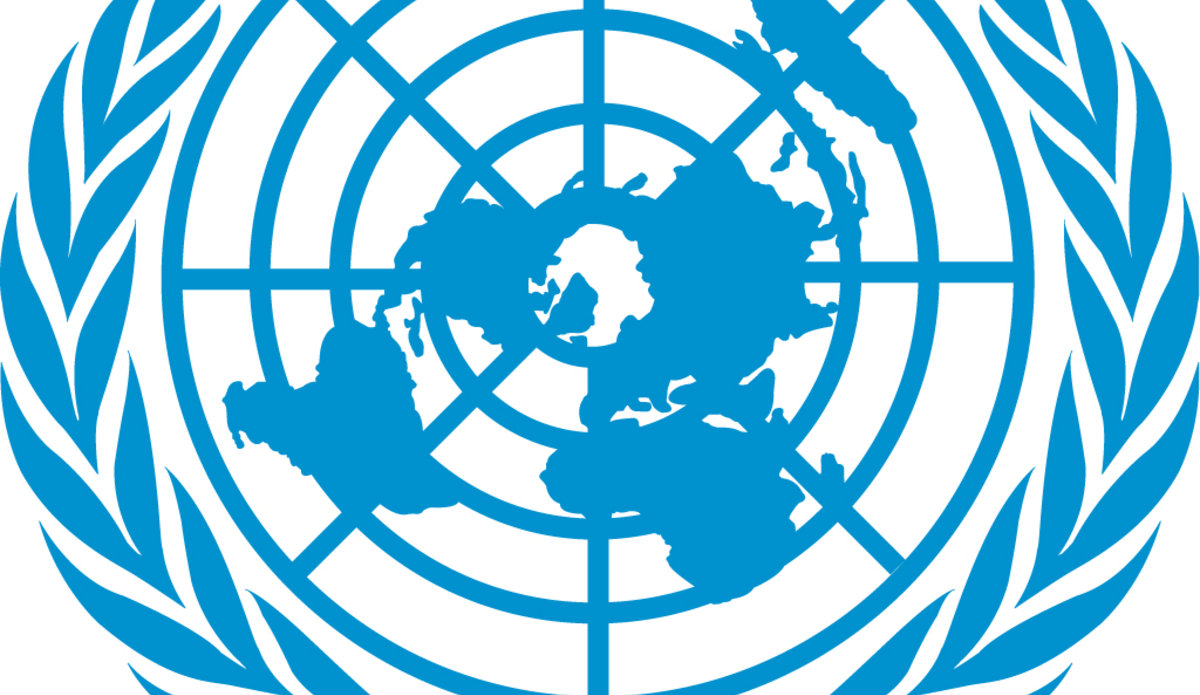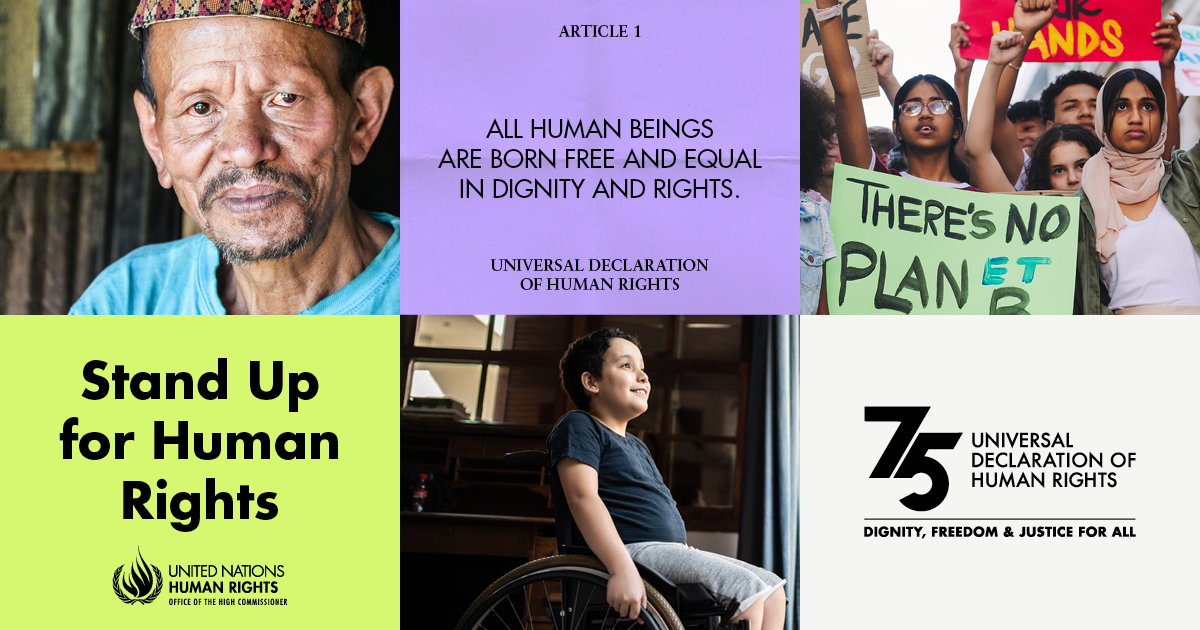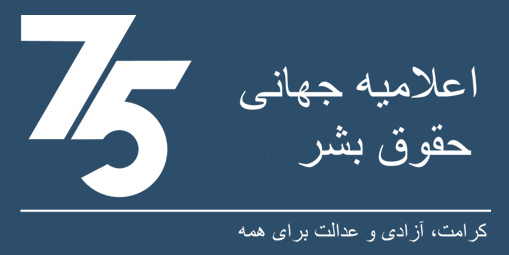Press conference with UNAMA and UNFPA
KABUL - Transcript of press conference by Dr. Ramesh Penumaka, Afghanistan Country Representative for the United Nations Population Fund (UNFPA), and Nilab Mobarez, UNAMA Spokesperson’s Office.
UNAMA: Good morning everybody. My name is Nilab Mobarez from UNAMA Spokesperson’s Office and welcome to our weekly press conference this morning.
Our guest speaker today is Dr. Ramesh Penumaka, Country Representative for the United Nations Population Fund (UNFPA). He will brief us on the work of UNFPA in Afghanistan, particularly focusing on the theme of this year’s World Population Day - “Maternal Health: it’s a right, let’s make it real”.
Before I hand over to Dr. Penumaka I would like to make a few announcements from the United Nations activities around the country.
UNAMA CONDEMNS URUZGAN ATTACK
All of us in UNAMA condemn, in the strongest possible terms, the suicide bomb attack that took place yesterday in a marketplace in the Dihrawud district of Uruzgan which resulted in the death of a number of civilians and police officers. To target civilians who were shopping for food shows a total disregard for the sanctity of life by the perpetrators of this attack.
SG AND SRSG REPORT TO THE SECURITY COUNCIL
The Special Representative of the Secretary-General, Kai Eide was in New York last week on 10 July to address the Security Council on the outcomes of the Paris Conference and outline the way ahead. His strong message to the Security Council, was that business as usual was no longer an option here in Afghanistan.
The Security Council welcomed last month’s Paris Conference in support of Afghanistan, which raised more than $20 billion in pledges for the country’s development strategy and strengthened the partnership between the Afghan Government and the international community.
In a presidential statement, the Council endorsed the key elements identified in the Paris Declaration as essential for the security and prosperity of the Afghan people, including the importance of holding free, fair and secure elections in 2009 and 2010; ensuring respect for human rights and the provision of humanitarian assistance; and the need to improve aid effectiveness in order to ensure that the benefits of development were tangible for every Afghan, in every part of this country.
The Security Council also endorsed a special report on Afghanistan by the Secretary General Ban Ki-moon which is available to you all on the side table in Dari, Pashto and English. Please take a copy to read and please come to us afterwards if you have any questions. This is an important document and outlines our priorities over the coming months.
The Secretary-General made specific recommendations on strengthening UNAMA so that the mission can better serve the people of Afghanistan. We will be looking to expand both the number of staff and the number of UNAMA offices over the coming months.
UNHCR DISTRIBUTES ASSISTANCE FOR IDPS FROM ARGHANDAB
The UN Refugee Agency (UNHCR) sent non-food items to 2,000 families in the Arghandab district near Kandahar yesterday. The distribution of plastic sheets and water cans, as well as food items from the World Food Programme (WFP) is currently ongoing. This is the second such distribution of essential items by UN agencies for the most vulnerable families who have been displaced as a result of the conflict in the Arghandab district last month. UNHCR’s assistance includes 2,000 plastic sheets and 2,000 water jerry cans for the 2,000 families. These items will be distributed through the Disaster Management Committee in Arghandab District Centre.
UNICEF PROVIDES SUPPORT FOR THE CONSTRUCTION OF TWO SCHOOLS IN SARI-PUL
A short announcement from UNICEF today – the UN Children’s Fund - 2,500 school children will have access to education in two new schools to be built in Sari-Pul province. UNICEF has supported the construction of two schools - Angot and Adring Balghali. And we’re happy to say that 830 girls and 950 boys will attend the Adrin Balghali school; 315 girls and 240 boys will be able to study for a better future in Angot.
UNFPA: Thank you. On behalf of the United Nations Population Fund, UNFPA, I am privileged to be with you here today to mark World Population Day. On this occasion I would like to reaffirm the commitment of UNFPA to support the people of Afghanistan in their efforts to eliminate poverty, hunger and to improve the status of their health.
I would like to take this opportunity to look at the progress the country has seen over the past six years on the health front and the challenges still confronting the people of this country.
As all of you know, the Afghanistan National Development Strategy accords high priority to reducing maternal and infant mortality rates; accordingly the Ministry of Public Health has a comprehensive health policy in place for addressing these concerns.
Over the past six years substantial progress has been made in expanding health services in this country; today 85 percent of the population has access to health facilities. There are 16,000 community health workers working across the country; there are a number of facilities almost in every province to train midwives and 90 percent of health facilities have at least one health worker. In 2001, only four percent of pregnant mothers received attention from a health professional, last year it was 30 percent.
While the progress that has been made so far is significant - it is nowhere near sufficient. You are aware that the biggest challenge that we are facing is the number of women who are suffering from malnutrition and ill-health, and overall the number of mothers who die giving birth to a child.
You are also aware that Afghanistan has the second-highest maternal mortality rates in the world and the highest in the Asia-pacific region. It is estimated that about 1,600 mothers out of every 100,000 die in childbirth.
In provinces like Badakhshan, the maternal mortality rates are as high as 6,500 per 100,000 live births and in some of the remoter interior areas, this number can be much, much higher. What is significant is that nearly almost all of them are preventable.
It is significant, just to give you an idea that around 24,000 women die from before, during, or just after child birth in this country. By the time we complete this conference - two Afghan mothers will have died from preventable causes.
There are many reasons for this. One is that most of the girls are married very young. It is estimated that 50 percent of girls below the age of 15 are already married and some of them are as young as eight years old.
The second is that the fertility rate [the average number of children a woman gives birth to in her lifetime] are high. The average fertility rate for an Afghan woman is 6.7; compare this with Iran, which is 1.2 and Pakistan, a neighbouring country, which is 3.4.
Research all over the world has shown that the more children a woman has - the greater the risk of dying in childbirth, and the greater the risk of ill health.
As I said earlier although, 85 percent of the population of Afghanistan has access to health facilities; the physical access to functional facilities by people is far more limited; only 18 percent of the mothers who delivered last year were delivered by skilled birth attendants. 82 percent of babies were delivered at home by unskilled and untrained birth attendants and obviously this leads to higher mortality and also the death of babies.
One of the principal reasons women do not go to hospitals to seek medical attention is because of the lack of awareness or they are prevented by the man at home from seeking medical attention. The key to better maternal health lies with men. They have to be sensitive and aware of the health requirements and the needs of woman. Maternal health is not really a women’s issue - it is a really a man’s issue. It is every husband, every son, every brother who has to be sensitive and aware of the importance of ensuring the woman - the wife or the mother or the sister or the daughter gets proper medical attention.
It is also important to increase birth spacing, the space between one pregnancy and another, so as to reduce the overall fertility rate which has a direct impact on poverty reduction. If the current fertility rates are not controlled, the current population of Afghanistan which is around 24.7 million people today is likely to get to 56 million by 2050 - Afghanistan from 47th most populous country in the world would graduate to 31st most populous country in the world.
This the context in which the United Nations is committed to supporting the Government and the people of Afghanistan and other development partners to ensure that no woman dies giving birth to a life. And this is our vision that’s driving UNFPA and our work in Afghanistan: we support the Government in implementing the Afghanistan National Development Strategy which seeks to reduce maternal mortality rates by 15 percent by 2012.
We are, through our efforts committed to ensuring universal access to health services and to ensure that every pregnancy is wanted, every birth is safe and every girl and woman is treated with dignity and respect.
We will work in partnership with civil society and donor agencies, the Government and other partners in ensuring that these changes are brought to the people of Afghanistan. I take this opportunity to call upon all, especially those here in the media today who have an extremely important role to play to spread the message of how important it is and how easy it is to address this problem if we work together.
QUESTIONS AND ANSWERS
KILLID GROUP [translated from Dari]: You spoke about UNAMA’s expansion, could you please elaborate more? And Dr. Ramesh, you said that 24,000 women die annually, how precise is this figure and what is the source?
UNAMA: In a special report to the Security Council, the Secretary-General, Ban Ki-moon expressed his support for the strengthening of UNAMA’s role in Afghanistan. The increase in the number of competent UNAMA personnel is crucial for the successful implementation of UNAMA’s mandate. The idea is to recruit more national and international staff in areas such as elections; ANDS implementation; to help strengthen Afghanistan’s institutions; aid effectiveness; and one of the most important sectors - humanitarian assistance. In the coming months, we will also open offices in areas where we do not currently have offices.
UNFPA: Statistics relating to maternal mortality rates are based on studies conducted in 2003 and 2004. What I have quoted comes from the 2004 statistics. I just want to mention that the maternal mortality rate does not change drastically in a short period of time. It takes several years, even several decades for a big impact to be made on the maternal mortality rate. Of course, there can be a demonstrable impact on this because of expanded health services. But, in terms of the age of marriage, birth spacing, accessing health services and training of the skilled birth attendance, it is a longer process. The 2004 survey was a nationwide and comprehensive survey. There is a proposal to conduct another survey this year and we will support the Ministry of Public Health in conducting it. When the census is conducted in 2010 there will be much more reliable data on the maternal mortality rate.
GMA [translated from Dari]: My question is on the point that 85 percent of the population has access to health services. What is the source of this and if the figure is from the government of Afghanistan it is not reliable. And the figure contradicts your own remarks about the maternal mortality rate for instance in Badakhshan.
UNFPA: There are two issues. As far as the maternal mortality survey is concerned it was an independent, internationally commissioned and nationwide survey. That’s the only data we have which comes closest to what we can say is the reality. The second data about access to health services is from the health management information system of the Ministry of Public Health which maintains a score card, which is monitored by the University of John Hopkins. I am not saying that 85 percent of the people utilise health services, but technically 85 percent of the population has access to a health facility if they choose to go to one; know about it; and are allowed to do so.
HASHT-E-SUBH [translated from Dari]: I am referring to the latest statement from the Chairman of the Independent Election Commission, the IEC, who said there are possibilities of a postponement of elections. I would like to know UNAMA's view on this and how serious the security situation is to postpone elections?
UNAMA [translated from Dari]: With regards to elections, I would like to say that this is a complex process and one which needs to take place throughout the country. As you know, every post-conflict country and countries with security challenges may face problems and challenges during elections. We do not underestimate the challenges that security poses, but it is premature to say now, in July 2008, that as a result of the current security situation this will result in the postponement of elections.
Another point which is extraordinarily important, is that we have a very short time before the next elections are held and therefore it is important for all stakeholders involved to prepare now for this important democratic process - and we see this urgency in all their preparations. UNAMA is assisting the Afghan Independent Election Commission to prepare for the free, fair and secure elections in Afghanistan in 2009 and 2010.
RAH-E-NEJAT DAILY [translated from Dari]: You mentioned in your opening remarks that the assistance from the Paris Conference will be evenly distributed among all provinces. Does UNAMA think that all provinces have the same kinds of requirements or they will be different?
UNAMA [translated from Dari]: As you know, the Paris Conference was more than just a donor conference - it was not all about raising funds or donations for Afghanistan. An important aspect of the Paris Conference was about the Afghanistan National Development Strategy, the ANDS, designed according to Afghanistan's priorities in different sectors and which was presented to the international community. This was endorsed by the international community and that is the roadmap for all of us in the coming years to deliver progress to all parts of Afghanistan. And different parts of the country have different needs.
When it comes to the issue of humanitarian assistance, when there is an emergency, UN agencies get together with the government of Afghanistan to address it; in relation to that last week, we jointly launched another appeal with the government of Afghanistan to support 4.5 million food insecure Afghans throughout the country for one year. We hope that this appeal will be fully funded. If you also recall, we launched our first appeal back in January which was fully met and we will be able to distribute this food assistance from that appeal until the end of August this year.
PAJHWOK [translated from Dari]: I would like to know about the number of child births on a daily basis and also child mortality figures on a daily basis. There is a statistic saying that 600 children are dying each month from preventable diseases – can you clarify this figure please?
UNFPA: There are two issues. I referred to mothers dying during child birth. That index is 1,600 mothers in every 100,000 live births. That is an average measure which varies across the nation. The other issue is about the child mortality rate. The index of infant mortality is measured in every 1,000 live births; now in this country the number of infants dying during the first year of life is about 165 per 1,000 live births. So if 1,000 children are delivered alive, 165 children are dying before they celebrate their first year. That number is obviously falling with the expansion of the health facilities. That again is a long-term process. The big impact will not be shown in one or two years but may be shown in five or ten years.
 UN
UN







